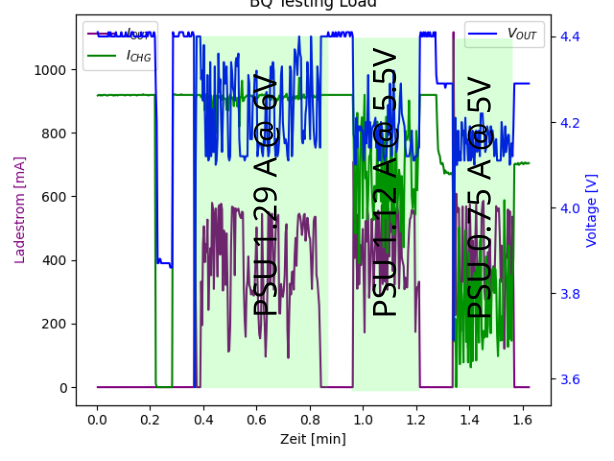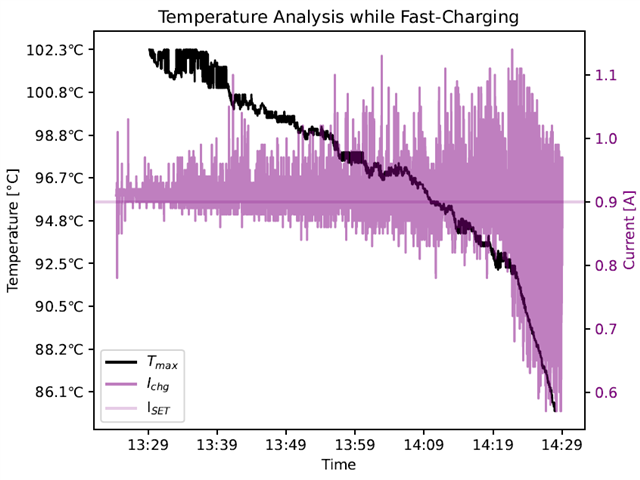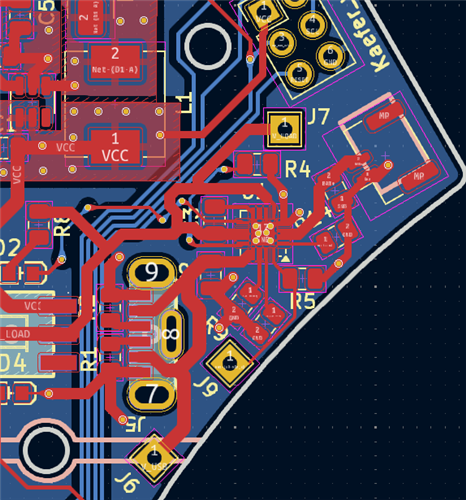Other Parts Discussed in Thread: BQ24074, , BQ25616
Tool/software:
Hello!
I am currently building a device that controls 2x12V fans. It is powered by a 3.7 Lipo. I am using the BQ24074 to charge and run the fans at the same time. Charging only works fine. I can also run the system with the battery. But charging and running at the same time seems to cause some problems.
My configuration:
BQ24074EVM, ILIM mode, JMP term = float, JMP TMR = GND
R_LIM= 1104 Ω -> I_LIM = 1.46 A
R_SET = 1003 Ω -> I_SET = 0.887 A
Lipo: 1S , 3.7 V, 0.150 Ohm, maximum charge capacity 1000 mAh
My system (DC booster, fan, microcontroller) consumes 0.87 A at 5.2 V
In the following picture you can see V_OUT, I_OUT, I_CHG (charging current measured via testpoint 16 as recommended).
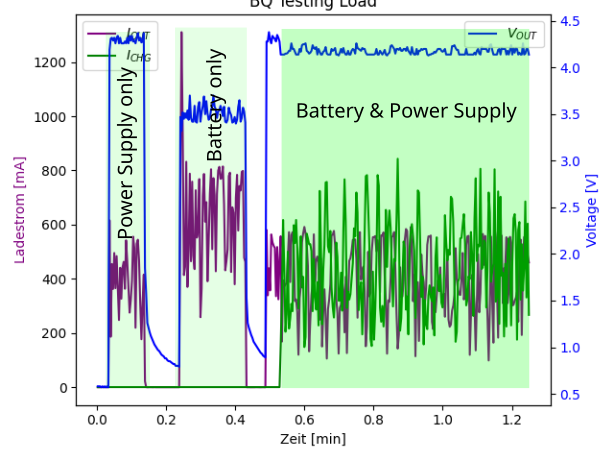
Problem: When the BQ24074 is charged and powered at the same time I_out is very unstable and not even close to I_SET = 877mA. My first idea was that it has something to do with the boost converter. I put some capacitors right after the output (as suggested here: e2e.ti.com/.../5077750, but that didn't change anything.
To get a complete picture of my system, this is my schematic (i didnt put the MIcrorontroller on the schematic to keep it "simple". But there is a Attiny44 at V_LOAD as well):

My test setup looks like this:
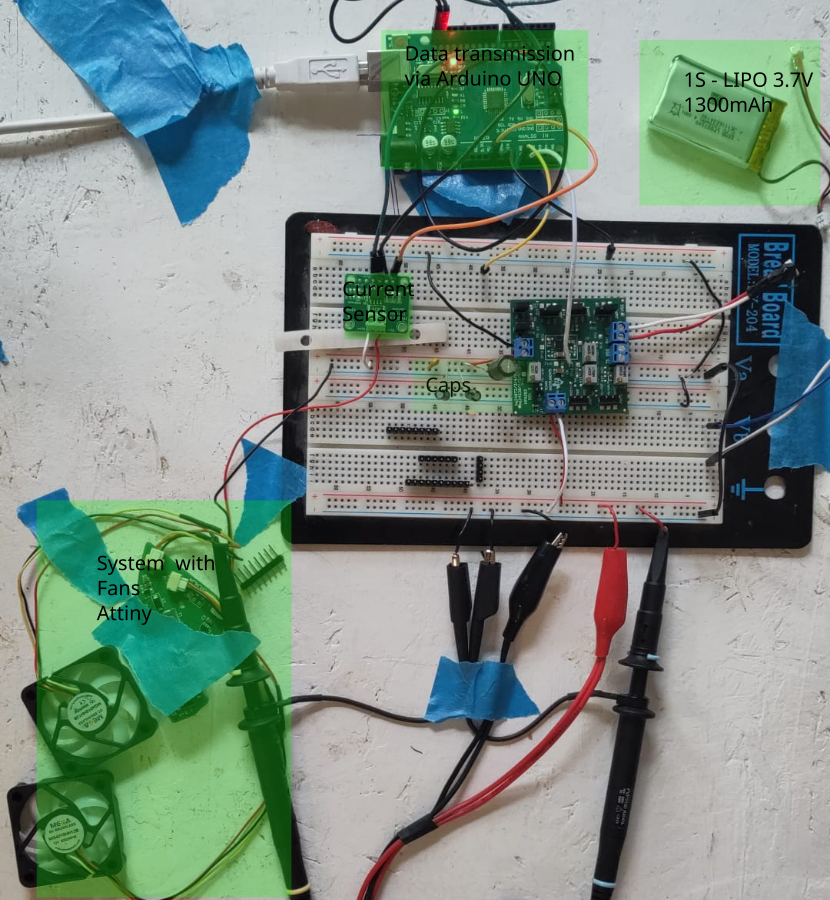
I have several questions about this:
Is there any way to get a stable charging current of ~900mA while powering the system?
Is this behavior normal? Could it damage anything or shorten the life of the board?
If the problem is the boost converter and the problem cannot be solved with this IC, is there an alternative to supply 12V to the fans?
Thank you very much!
Best,
Chris


